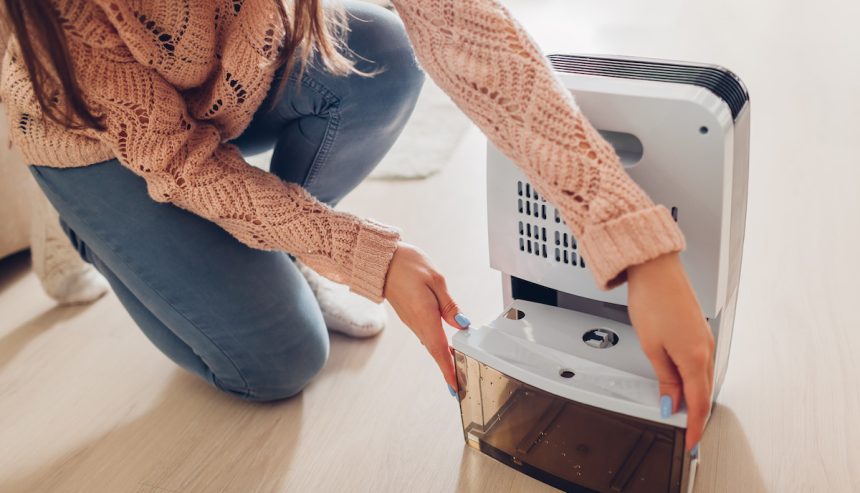
While you can’t control the moisture outside, you can control the humidity levels in your home. Using a dehumidifier is a relatively low-cost way of doing that. Read on to learn when to use a dehumidifier and how to use it safely:
When to Use a Dehumidifier
- Use your dehumidifier in damp and musty-smelling rooms. Aim for a relative humidity of 40-50 percent. More than that can lead to mold growth and below 30 percent can cause structural problems.
- Dehumidifiers are most useful for people suffering from respiratory problems, such as asthma, allergies, and colds. An ideal level of humidity can help alleviate their symptoms.
- If you live in a humid climate, use a dehumidifier in your basement, bathroom, and attic, especially in the summer.
- If you’ve recently experienced a flooding problem, dehumidifiers can help dry up the flooded area. Talk to a disaster restoration specialist first.
Maintenance Tips
- Read the owner’s manual and follow the manufacturer’s instructions. Get familiar with the features and requirements of the dehumidifier.
- Check and clean the air filter, as well as the exhaust grilles, to prevent dust build-up and allow free air flow.
- Clean the water tank on a regular basis to avoid mold growth and bacteria. Use regular soap and water to scrub inside the tank.
Usage Safety Tips
- Place the dehumidifier on a level and stable surface. Leave at least 10 inches of free space at the back of the dehumidifier, and five feet in front of it. Keep the dehumidifier away from flammable items and heat sources.
- Plug the dehumidifier into a grounded outlet. Avoid using extension cords to power the dehumidifier since cords can be a fire hazard from overheating.
- Don’t operate the unit in a space larger than is recommended in the manual. Close the windows and doors in the area where you use the dehumidifier. Moisture coming from outside can stress the machine and may damage it.
- Regularly clean and vacuum the area where the dehumidifier is running. Dust absorbed by the unit can spread out into the room and fill it with allergens.
- Turn off the unit when nobody is home – someone should be there in case the machine malfunctions. Some dehumidifiers have an automatic turn-off function that you can use.
- Empty the tank as often as needed to avoid spills and water damage. Some models automatically shut off when the tank is full or when they reach the set humidity level.
- Do not move the dehumidifier from a cold room to a warm room too quickly to avoid condensation inside the machine. Wait at least 10 minutes to power the dehumidifier back on after turning it off, to prevent the compressor from overheating.
While dehumidifiers are great at removing dampness from an area, always consult water damage restoration specialists if you have a serious water problem. As mold infestations can be difficult to remove, check out Does a Dehumidifier Kill Mold? For mold remediation service and water damage repair, contact your local PuroClean office.




 PuroClean of Wellington
PuroClean of Wellington